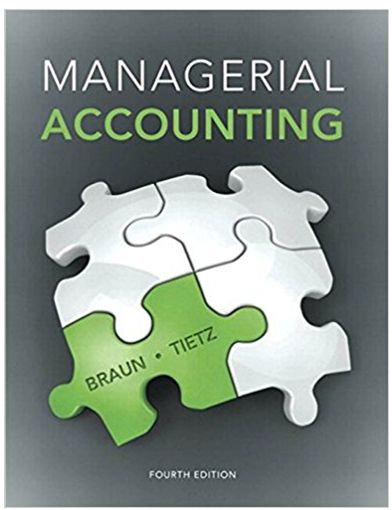1. Briefly describe a service company, a merchandising company, and a manufacturing company. Give an example of...
Question:
1. Briefly describe a service company, a merchandising company, and a manufacturing company. Give an example of each type of company, but do not use the same examples as given in the chapter.
2. How do service, merchandising, and manufacturing companies differ from each other? How are service, merchandising, and manufacturing companies similar to each other? List as many similarities and differences as you can identify.
3. What is the value chain? What are the six types of business activities found in the value chain? Which type(s) of business activities in the value chain generate costs that go directly to the income statement once incurred? What type(s) of business activities in the value chain generate costs that flow into inventory on the balance sheet?
4. Compare direct costs to indirect costs. Give an example of a cost at a company that could be a direct cost at one level of the organization but would be considered an indirect cost at a different level of that organization. Explain why this same cost could be both direct and indirect (at different levels).
5. What is meant by the term “inventoriable product costs”? What is meant by the term “period costs”? Why does it matter whether a cost is an inventoriable product cost or a period cost?
6. Compare inventoriable product costs to period costs. Using a product of your choice, give examples of inventoriable product costs and period costs. Explain why you categorized your costs as you did.
7. Describe how the income statement of a merchandising company differs from the income statement of a manufacturing company. Also comment on how the income statement from a merchandising company is similar to the income statement of a manufacturing company.
8. How are the cost of goods manufactured, the cost of goods sold, the income statement, and the balance sheet related for a manufacturing company? What specific items flow from one statement or schedule to the next? Describe the flow of costs between the cost of goods manufactured, the cost of goods sold, the income statement, and the balance sheet for a manufacturing company.
9. What makes a cost relevant or irrelevant when making a decision? Suppose a company is evaluating whether to use its warehouse for storage of its own inventory or whether to rent it out to a local theater group for housing props. Describe what information might be relevant when making that decision.
10. Explain why “differential cost” and “variable cost” do not have the same meaning. Give an example of a situation in which there is a cost that is a differential cost but not a variable cost.
Balance SheetBalance sheet is a statement of the financial position of a business that list all the assets, liabilities, and owner’s equity and shareholder’s equity at a particular point of time. A balance sheet is also called as a “statement of financial...
Step by Step Answer:






